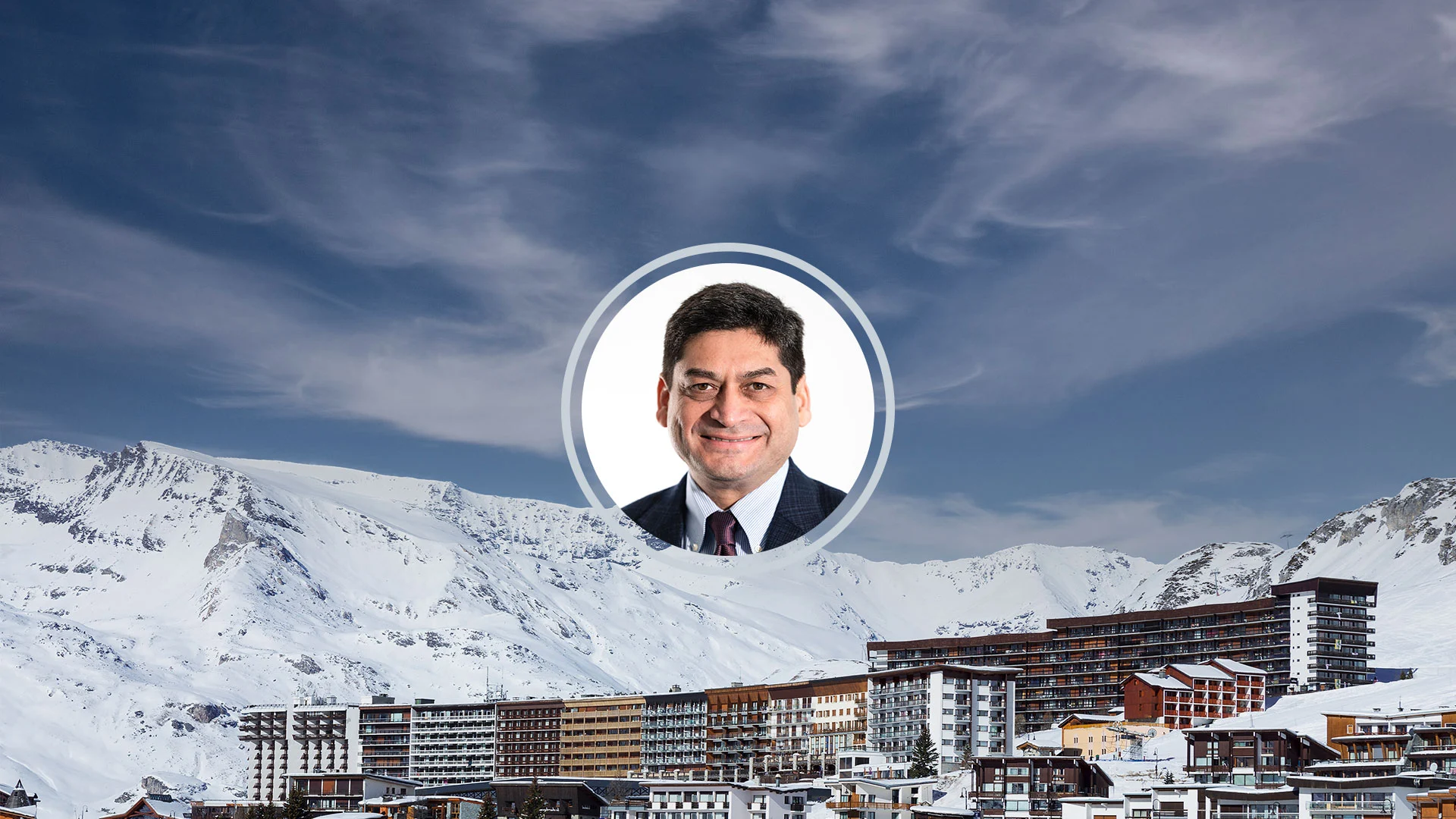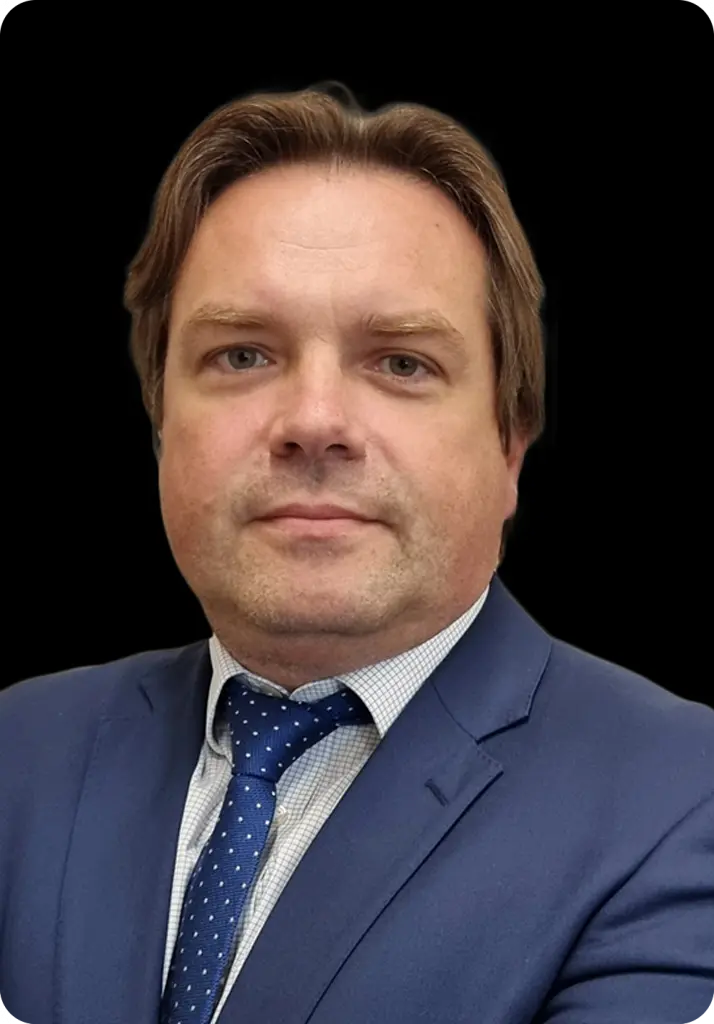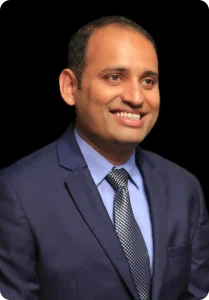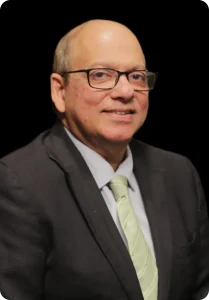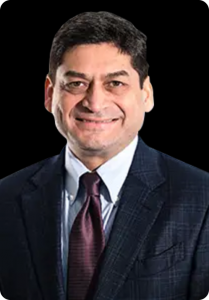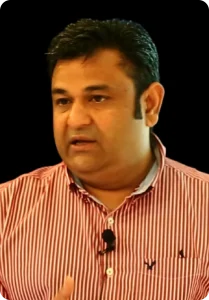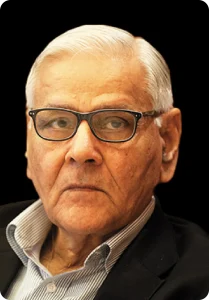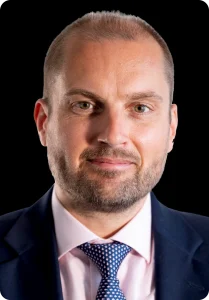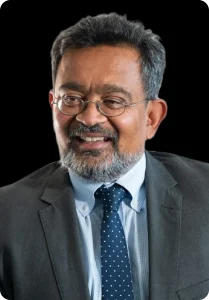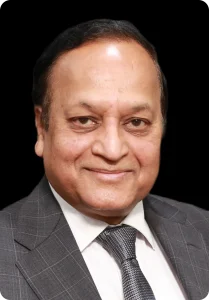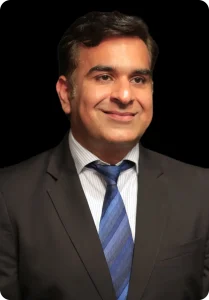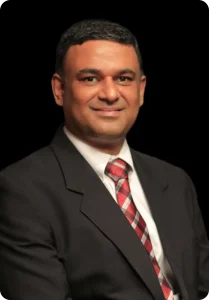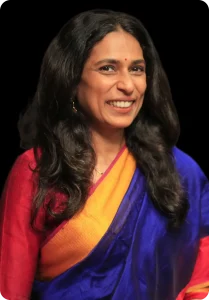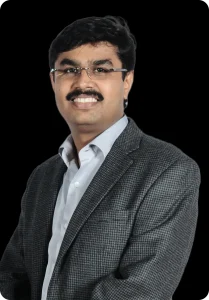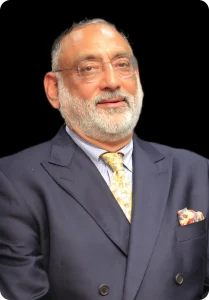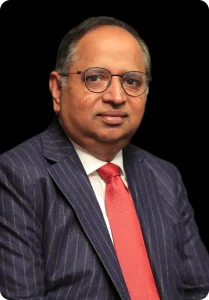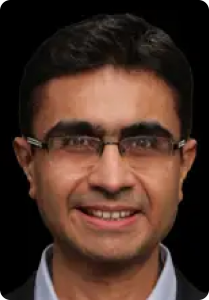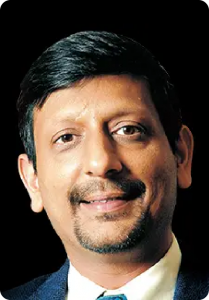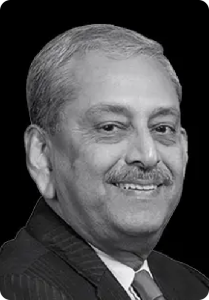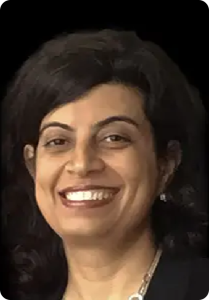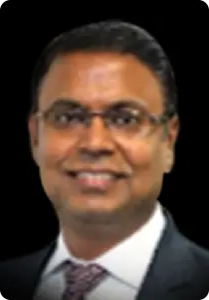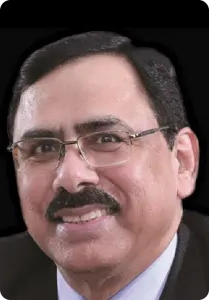Prashant Ruia, Director – Essar Capital, in conversation with Siddharth Zarabi, Managing Editor – Business Today at World Economic Forum Davos 2023. He spoke on world economy reshaping & how Essar having deleveraged, is making its businesses future ready & assets value-accretive with new investments in decarbonisation.
Interview Transcript
How the Ruias reshaped their empire
Prashant Ruia, Director of Essar Capital, in exclusive conversation with Siddharth Zarabi, Managing Editor, Business Today Television, at India Today Group Studio at Davos.
Q) Prashant, you have been busy for the last few years reinventing the Essar Group. Tell us about what that process has been like and where you stand today?
Prashant: First of all, thank you for having us. It’s amazing to be back here in Davos after a couple of years, which was cut off because of the Covid. From an Essar perspective, it’s been an interesting period, the last few years. We, as you know, have been involved in Metals & Mining, Energy, Infrastructure businesses, but we obviously went through a phase of deleveraging the group. We monetised some of our assets. We deleveraged about $25 billion, which I do believe, is one of the largest corporate deleveraging in India.
Q) $25 billion over what period of time? What’s the rupee value for that?
Prashant: Over the last three to four years. It’s about 200,000 crores.
Q) I just want that headline to sink in. 200,000 crores in less than five years?
PSR: In less than five years, yes.
Q) How did that happen?
Prashant: Well, we decided a few years ago that we wanted to deleverage, we wanted to monetise…and the only way, we felt the right way to do that would be to monetise some of our key assets, which we did, and that process is now largely complete, and that has led to this significant deleveraging. The monetisation values which we received, which was obviously around 200,000 crores.
Q) What are the companies…just for the people who are watching us…
Prashant: Yes.
Q) Essar Steel?
Prashant: Yes, it’s basically Essar steel, Essar Oil, the refinery, and then we had a BPO business, which we also monetised, and then a few other businesses.
Q) So, the debt is done and dusted?
Prashant: The debt is done and dusted, I would say 100%, we have repaid all the debts, and 100% we are repaying all the debts of the Indian banking system.
Q) What are the implications of that on for your future strategy?
Prashant: Exactly, so we decided our strategy around three themes. The first theme was deleveraging, which is largely now complete. The second was consolidation of the operating companies within the group, post the monetisation. That process also, we have now largely completed over the last two years, and now we are entering the phase of growth once again. So, that’s how we have looked at the group, and when we say growth, once again, what we mean is investing within the same sectors. So, energy, metals and mining, infrastructure and technology and services, those are the four sectors, we have been involved with for the last two decades, I would say, but investing in new ESG centric, new technologies, which would build future ready businesses.
Q) Explain the new proposed structure as you say, you are designated as Director of Essar Capital, so what’s Essar capital all about?
Prashant: The way we are looking at the group is principally Essar Global, which is the holding company of the group. Essar Global is operating very much like a fund now, with Private Equity type principles, and the fund is therefore managed by Essar Capital. Essar Capital is therefore the managing company, which manages the fund, which is very normal for any other private equity structure. So, that’s what Essar Capital is about. The focus around the new investments is around three themes, decarbonisation, decentralisation and digitisation. Those are the three themes, which we believe, are all going to define the future investments in the cutting edge of technology, going ahead, and therefore, that’s what we have adopted.
Q) What does decarbonisation mean? Means that you won’t go back into, let’s say, oil refining and oil retail, as a business. What does that decarbonisation mean?
Prashant: It’s a very interesting question. Siddharth look at, what the world is doing right now? So, if you look at fossil fuels, the world has invested over the last 40 years, 50 years now, in developing fossil fuel based energy for the world. So whether it is coal, whether it is oil, whether it is gas, doesn’t matter. It’s all fossil based, fuel based, and what the world is now going towards is, to move away from fossil fuels, because we want green fuels.
We don’t want to have CO2. We want to decarbonise, we want to reduce the CO2 from the whole economy effectively. What that means is you have to reinvest and replace all the investments which have been made over the last 40-50 years. Over and above, the growth which will come in demand, that presents a huge opportunity, and within that decarbonisation for us means two things. Number one, investing in new future fuels, whether it is hydrogen, whether that be biofuels, whether that be renewable energy, of course, but what I am most excited about is transition. You cannot replace all the infrastructure, which has been built, just like that, and therefore, what I am most excited about is how we can take integrated chains of infrastructure and transition them into green sustainable assets. It basically means decarbonise, if you take… you mentioned refinery, steel plants, whatever, how can we decarbonise them, and how can we make them future ready and accessible for the next 20-25 years?
Q) Absolutely that’s a very important point. You can’t just throw away industrial capacity that’s been built over decades of effort and money.
Prashant: Right.
Q) What’s the kind of investment that you have already put in? Is this a future plan? Or has it already gotten off the ground?
Prashant: No, I wouldn’t say, it’s plan, I mean, we have been working on this for the last 2-3 years now. We have obviously not gone out and talked about it, because we were first focused around deleveraging and consolidation. With that phase now coming to an end, now the focus is on growing again, and these are the facets with which we are going. Within this portfolio, we have about 5-6 really interesting themes and investments, which we are already working towards. For example, around energy transition, we are building an Energy Transition Center in the UK, to provide hydrogen and biofuels and make it the primary future fuels facility in the UK. As you know, we have a refinery there, and we are looking at how we can make use of it.
Q) Stanlow?
Prashant: Yes, Stanlow refinery. Essar Oil UK is now investing in building 2 gigawatts of hydrogen, investing in building a million tons of second generation biofuels…
Q) All in the UK?
Prashant: No. It’s partly in the UK, and we believe India is a very, very key market for supply chain.
Q) There’s a new hydrogen policy that’s come up. Explain that in simple terms to our viewers, what does that really mean. Because there are a lot of government schemes that keep coming up. What will it effectively translate, and not just for your group, but for the economy?
Prashant: Which has been announced, recently and absolutely for the economy. Well, look, hydrogen is a very, very key theme and the new policy is an extremely important step for India to adopt hydrogen economy. Obviously, we need to replace, as I said, we need to replace all the fossil fuels and there is no one solution. So, renewable energy is one solution, whether it is solar, hydro, whatever, the other solution is hydrogen, which can largely replace natural gas consumption. So basically, hydrogen as an alternative for natural gas is where hydrogen comes in.
Q) For India, it means that where gas is scarce?
Prashant: Gas is scarce. Therefore, hydrogen eventually.
Q) Will be for the future? In what timeframe, do you think it’s going to sort of be a serious scale level business as an industry?
Prashant: Correct. To be honest, India is a little bit behind the curve.
Q) Oh, really?
Prashant: Because the leaders currently in hydrogen are clearly Europe, because they saw this threat to their natural gas for a while, for obvious reasons, and then countries like Japan and Korea have also taken a fairly aggressive position. The US has now announced the new policy a few months ago, and they are now taking a pretty-aggressive position. So, it is very, very welcome step that India has done this now. Look, it’s something which is going to take time. So it’s, if I was to say that five to six years, we could have a sensible capacity of producing hydrogen that would be a fair estimate.
Q) Prashant, I realised while you were answering that you are squaring up against two very big businesses among others – Reliance Mr. Mukesh Ambani and Gautam Adani of the Adani Group. Is that so? Is Ruia also a storied business family, now going after the same sectors where Mr. Ambani and Adani are going to slug it out?
Prashant: Well, unfortunately, we are in the same sector for a long time. So, we have been in oil and gas for the last I would 30 years now. So it’s not something which is any different, because we have been in energy space for a long time. Having said that, we are not looking at it in the same way as what some of the other groups are looking at it. Our focus around making hydrogen for the time being is to use India as a supply chain, and export ammonia as in.. hydrogen converted to ammonia to our UK facility. So, we are looking at this more as a captive supply of hydrogen, which can then be used at our UK facility.
Q) You are not going to go head to head with Essar oil pumps all over the country that happened with Reliance, for example?
Prashant: No. Unfortunately, we are right now focused around using India as a supply chain, which we believe… This is really the first time Siddharth, in the history of India, that India can actually export energy.
Q) That’s a wonderful point, country that’s completely dependent…
Prashant: It’s India something… India, as a country, one of the biggest disadvantages we have had over time is that we do not have sufficient oil. We do not have sufficient gas. We do not have sufficient coal, and we have imported all of these things, and basically energy. We have imported for the last 50 years, 100 years. I would say our average gas energy within the country is only been anywhere between 20 and 30%, depending on the fuel.
Q) I must tell our viewers here that Essar oil was sold to Rosneft, which is a Russian company. So when Prashant speaks about energy, he is someone who’s sold it. How much was it sold for? Prashant, just for…
Prashant: For $13 billion, $12.9 billion.
Q) So, $13 billion, a massive amount of money, so he knows about it. We have also been purchasing Russian oil, and that’s almost like 1/5th of our crude imports really. Prashant, how strategic is that from an energy pricing point of view?
Prashant: Well, Government of India has made its position very clear on this, and that is that, they would like to buy the lowest cost energy, whether it’s oil or gas for the Indian public. That’s the position the government has taken, and because of which India continues to buy low cost energy oil from Russia, and, it has helped clearly in controlling inflation in the country, because had we not been doing that, then we would have seen significant increase in prices at the pump, and which would have led to inflation, which is what we are seeing in Europe, and other parts of the world, who are not following this policy.
Q) Absolutely, Prashant, what’s the possibility of partnerships with global companies? I asked you this because some of the areas that you are getting into, while you are focused internationally will require some amount of cooperation. You have made it clear that there is no competition with the domestic large industrial groups, the Ambani’s and Adani’s. Is there a possibility of cooperation within India or externally you see with funds for example?
Prashant: Look, one of the things which I mentioned earlier is, we are looking at Essar Global and investing with a private equity mindset. What does that exactly mean? It also means, it means we still make investment decisions, ownership and build assets with a passion of an owner, so we remain, entrepreneurs at heart. However, the levels of risk which one would take the levels of governance, which one would need, and the and the way we would structure them, the levels of debt we would take would be far different from what we would have done, let’s say in the earlier structuring of the company.
Q) Why would that be?
Prashant: Because those are the principles with which private equity investments are made, the norms are…
Q) So, it’s a mindset change.
Prashant: It’s a mindset change, if the norms are a little bit different. I am not saying what we did earlier was not right, because at the time when we made was big investments in the late 90s and early 2000s, India was massively investing in infrastructure, in building capacity for the domestic economy, and it was the flavor of the season at that time. We all forget it now, but if you look back 20 years, India was desperately short of power, desperately short of steel, refining capacity, all of these things which cement, petrochemicals, everything, and it was Indian industry, which went out and invested and built these world scale capacities, which today we are benefiting from, so that was what was the need of the hour then. For us now, the need of the hour, we believe, as far as Essar goes, is to look at it more with a private equity mindset to build businesses, which are future centric, ESG compliant, and which are capable of being realizable, in terms of monetisable in a reasonable time frame.
Q) What’s the size of investments that you could share with our viewers in terms of how much capital do you think you will be able to deploy all across the new portfolio that you are building?
Prashant: Yes, so just before coming to that, to answer the earlier question, so in that process, one of the other big changes is that we will now look at building businesses in partnerships, so whether it is financial partnerships, whether it is strategic partnerships, absolutely open to working with that mindset.
Q) Is something in the works?
Prashant: Not yet, but certainly. As I said, it’s the mindset, how we build businesses. Earlier, the concept was, we would build businesses largely 100% ownership or majority ownership.
Q) Raise debt from the domestic banking system.
Prashant: Raise debt from the domestic banking system, that is now changed to the extent that we can… we are very much open to working with partners. It’s also a good shift, and it’s how private equity investment is largely done in any case.
Q) Have you also relooked at the equity to debt mix that you earlier followed versus what you may want to do now?
Prashant: Look, as someone who is repaid 25 billion.
Q) Exactly and that’s the reason I asked you this. I don’t think there’s anyone in the country, and I don’t say this to praise Prashant or the group, but who’s repaid $25 billion, I don’t think that’s happened any time in the past.
Prashant: I just share one secret with you, and with your viewers, it’s a lot easier to borrow it, then to pay it back.
Q) Well, that’s a lesson for Consumer Finance, that’s a lesson for Personal Finance for everyone. So what’s the kind of deployable sums that you are looking at?
Prashant: Yes, look the Essar Global… Let me just give you a few statistics where Essar Global is, and how the group is set up now. So Essar Global itself as a fund, has AUM, Assets Under Management of about $8 billion that’s primarily the equity value of all the portfolio companies, which we have. We have currently about 12 portfolio companies. These 12 portfolio companies today have a revenue of about $15 billion in total, and it is from these revenues, and with this Assets Under Management that we would make fresh investments. I am not going to give you a particular number, but obviously, the investments are not going to be like significant greenfield, $8-10 billion kind of investments. They are going to be smaller, but for example, in energy transition, we are looking at, in total about $3 billion of investment in that space, and then we are looking at green steel. We are looking at other areas, with our themes, which we are building. We have been working on it for the last 2-3 years, and in over the next couple of years, you will see them unfold, but to answer the question on debt, having been through what we have been through, I still don’t believe, leverage is a bad word. It’s still, but it has to be sustainable. It has to be sustained. So, it’s not that we are going to have zero leverage in the future, that’s not the case, but we are going to be very, very highly sustainable debt in the portfolio companies to the extent required for the business.
Q) On $15 billion dollars of revenues, what’s the kind of profitability that you have right now?
Prashant: So, the Group EBITA would be in the region of about a billion dollars and growing to about $2 billion over the next few years.
Q) Prashant, my final question, and this is to sort of the larger landscape that businesses operate in India. I have been speaking to global leaders as well, and they all say that a lot has been done on ease of doing business. What’s the India opportunity looking like, from a global perspective? How have things changed as far as the outlook is concerned in 2023?
Prashant: Siddharth, my own belief is that India is absolutely in the sweet spot right now, and the reason is that, I mean, if you look at investment destinations globally, then I would say, India is right at the top. Obviously, China has fallen off a bit. From an international destination perspective, Europe is having a very difficult time because of the war in Ukraine. Middle East doesn’t really require significant investment because they are making tons of money, so they are making their own investments, so if you think about the landscape globally, obviously US remain strong, but within this part of the world, India is in a very sweet spot.
I think, the work which and the policies, which our leader Shri Modi has brought out in the last few years, has brought about significant amount of transparency, significant amount of policies, which lay a level playing field for everybody, and the digitisation usage to clean up the economy, in every sector, in every part, whether it’s the Aadhaar Card, whether it’s the digitisation, whether it’s a bank accounts of millions and millions of people, and the list goes on, whether it is providing subsidy through the bank accounts, etc. that has brought about a significant amount of transparency in the system, and we are in a very strong position, I would say for attracting investment and obviously, India and we as a group, continue to see India as home turf for our future investments.

